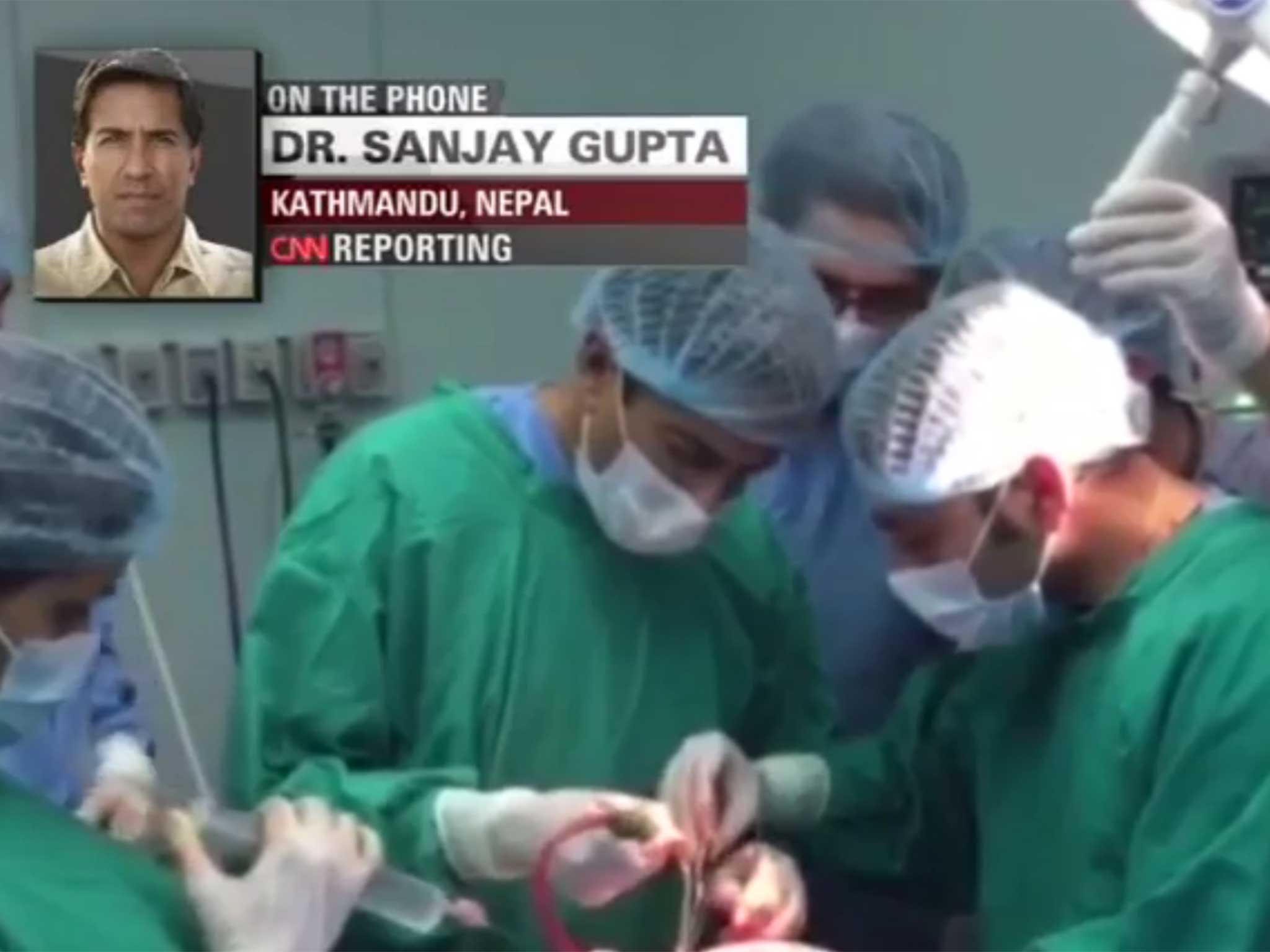Nepal earthquake: 'They just need another set of hands,' says medical correspondent who performed brain surgery on injured girl
Dr Sanjay Gupta is a trained medical professional who works as a neurosurgeon at Emery Hospital in Atlanta, US

A US news reporter abandoned his journalistic duties amid Nepal’s devastation to scrub up and perform brain surgery on an injured child.
CNN’s Dr Sanjay Gupta, in the region to cover the aftermath of the 7.8 quake on Saturday, performed a craniotomy on 15-year-old Sandhya Chalise after a wall fell on the teenager outside her home in a remote region of the country.
By the time Ms Chalise had managed to reach Kathmandu Bir Hospital blood had collected at the top of her brain and she needed urgent surgery.
“Literally, I think they just need another set of hands because the demand is so high,” Dr Gupta, who works as a neurosurgeon at Emory Healthcare in Atlanta as well as CNN’s chief medical correspondent, told the network yesterday.
The 45-year-old neurosurgeon, who was asked by local doctors to help, said: “They need more resources, they need more personnel here right now, and they’ve expecting many more patients as these rescue operations go on.
“They are barely able to keep up right now,” he added.
The child is now reportedly recovering well, and has been reunited with her parents.
Nepal’s medical facilities are struggling to cope as government authorities issue increasingly desperate pleas for additional medical supplies.
Yesterday, Dipendra Pandey, an orthopaedic surgeon, told The Independent how he had conducted 36 critical operations since the quake. He was working with just one operating theatre, as many of his patients recovered – or waited – outside under whatever shelter they could find.
More than 4,300 bodies have been pulled from the rubble in the aftermath of the earthquake – the strongest to hit Nepal in 80 years.
Official numbers suggest that as many as 8,000 people have been injured – but this number is expected to climb as the days pass and international organisations are able to reach remote areas.
International aid is beginning to trickle through, but congestion at Kathmandu airport prevented some Indian relief arriving yesterday.
Join our commenting forum
Join thought-provoking conversations, follow other Independent readers and see their replies
Comments
Bookmark popover
Removed from bookmarks